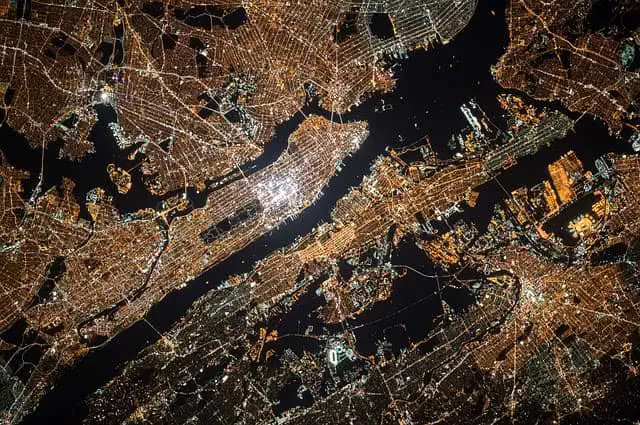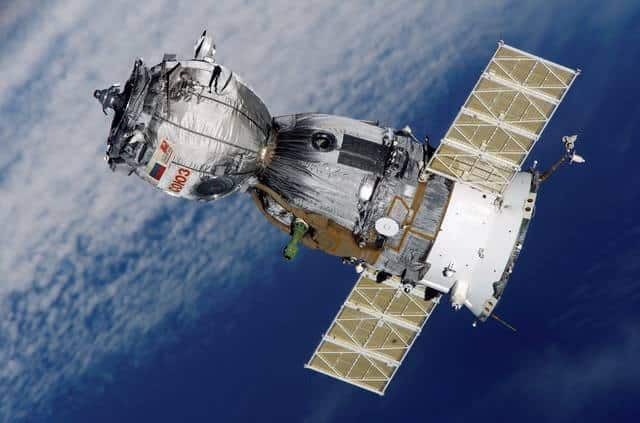Remote Sensing and Geographic Information System are the two most important aspects of geoinformatics. These two are interrelated fields which include many subfields like the GIS, Remote Sensing, Spatial databases, Photogrammetry, Environmental Science etc. Let us have a keen look at what these two signifies in the real-world phenomenon.
What do you mean by Remote Sensing and GIS?
Remote sensing is the science and technique used mainly to survey and gather information of any object remotely and not being physically present or contact. Through remote sensing, huge data collections can be acquired of the earth’s land and water bodies that is reflected from the surface of the earth. With the help of the satellites and sensors, the data can be collected and used in various fields.
According to the American Society of Photogrammetry, Remote sending can also be defined as the conventional camera by which the electronic radiations can be captured such as the radar, thermal, infra-red, multispectral, microwave and ultraviolet radiations. These radiations are then applied with special techniques to interpret different remote sensing imagery to create different maps such as the thematic maps, conventional maps, and the resource surveys. The data is used widely in the field of agriculture, forestry, geology, archeology, geography and much more.

Related: Unlocking the potential of cloud GIS in Forestry using new EOS Platform
Geographic Information System commonly known as GIS is much different than remote sensing. GIS is a computer-based tool which is mainly used for analyzing the features of the earth and mapping them. GIS integrates with database operations like queries and the statistical analysis to create the data for the maps for a particular location. It is more of a location information provider which helps us with a wide variety of information such as population, economic development, climatic change, plan strategies, vegetation, predicting the outcomes, and much more. The most distinctive characteristic of the geographic information system which makes it unique than the other spreadsheets is that it provides us with tool-based visualization in which we can overlay different layers of data’s.
Why use Remote Sensing and Geographic Information System?
Well, satellite imageries of remote sensing give you a “bird’s eye view” of the earth. It is much more cost effective than compared to ground analysis. Moreover, through remote sensing imageries, you can have a comparative study of any specific area which has changed in due course of time. Just by comparing the satellite imageries with the data over the years, you can very well interpret the change occurred over time. Few of the area in which remote sensing is vividly used are for land use mapping, mineral identification, changes in land use and population, natural resource mapping, plantation and vegetation mapping.
And with Geographic Information System which is mainly used to store the data and information in the form of reports and maps, it helps you analyze, manipulate and visualize these data from a geospatial aspect. A comparative study or predictions can easily be possible with the GIS data. One of the utmost critical and important usages of the geographic information system is in the disaster management. With the help of GIS and remote sensing, upcoming disaster can be predicted, and necessary measures can be taken in context to the human life.
Principle phenomenon of remote sensing
We all know that every object emits or reflect electromagnetic radiations. These rations are then detected by the use of a device known as a sensor or remote sensor. Each object has unique characteristics of radiations emitting and absorbing capabilities and remote sensing is the technology which has this uniqueness to understand the different radiations in the environment. But the most interesting fact is that the electromagnetic radiations have short wavelengths such as the X-rays, long wavelengths such as radio waves, infrared radiations, microwave radiations and ultraviolet radiations. And remote sending is the most powerful through which the imageries and their radiations are captured by the sensors, and we thereby can gather vital information’s.
What are the different types of remote sensing?
Broadly, remote sensing can be of two different types based on the source of electromagnetic radiations emitted.
- Active Remote sensing: Inactive remote sensing, the energy emitted from the earth’s radiance is generated and is sent from the platforms of remote sensing to the targets. The energy which is then reflected from these targets is then collected and recorded by using remote sensing sensors. The microwaves are normally gathered through the active remote sensing.
- Passive remote sensing: The passive sensors are used to measure the radiance of earth, but the energy content is very low. And hence the passive remote sensing is not very popular.
Understanding the functionality of GIS
Let us know have a look at how the GIS functions with its spatial and non-spatial data. This includes the following key pointers:
- Data entry: Both attribute data and digital data is entered in the GIS software through the inputs like the scanners, manual entry by keyboards or digitizer. Since the data comes from various sources and have different scales, references, hence this needs to have a common standard. And this, you can easily do by the GIS software through georeferencing. By geo-referencing it means stretching and enhancing the maps to reach to some common known coordinates. Few of the GIS software’s are like ArcGIS, ERDAS Imagine, ArcMap and QGIS.
- Data Storage: The data can be stored in two different ways depending on your usage. They are vector format and raster form. The raster form is where the data is stored in the form of grids or pixels. For a particular area, the line data are stored by joining the cells into lines, areas are stored as polygons and point data as single cells. And the vector data is stored using the coordinate system. The vector data is usually preferred.
- Analysis of data: The GIS data can be analyzed in many forms since it can store both spatial and non-spatial data. Moreover, different queries, network analysis, proximity analysis, carbon sequestrations, data mining, overlay operations, model building, climatic predictions and much more can be analyzed.
- Interpretation: The are many ways through which you can interpret the GIS data based on different models. Like, for example, with the records of the spatial remote sensing data, you can have climatic change predictions, human population and habitat predictions, and interpretations of change over the years.

What is the difference between Remote Sensing and GIS?
Let us now go through the difference between remote sensing and GIS:
- Remote Sensing is raster based whereas GIS is vector based. This implies, that the satellite imageries collected through the remote sensing sensors are composed of pixels, but the GIS maps have calculations and are line and shapes based.
- Another difference is that through GIS, we can georeference the remote sensing satellite imageries and the vice versa is not possible.
- Remote sensing also helps in providing data from the remote places where the human survey is next to impossible.
- Moreover, remote sensing is robust than geographic information system systems. Reason being that remote sensing allows limited ability to interpret the geospatial data. Whereas due to the compact design and many functionalities, GIS is more robust.
- Through remote sensing, you will be able to collect data which can be analyzed and can seek information. But through GIS, the data is being interpreted into meaningful and useful information.
- Also, GIS is cost effective and requires less manpower as it is tool-based. Whereas remote sensing is a costly affair as the data is incurred from space and through sensors and satellites.
- Another difference is that remote sensing reduces manual work and ground field study. But, many a time, GIS requires field study to interpret data into useful information
- Through the geographic information system, the data processing is more efficient as it has many components to analyze, interpret and integrate the data.
- Since the satellite imageries are taken from such distance above the earth’s surface hence at the time, the objects might be misclassified or can be confusing. Through GIS and ground survey, this can be validated.
- Moreover, distortions on the spatial images might occur due to the relative motion of the source and the sensors. But there is no such change of distortion through GIS as it is a software based.
Conclusion: Thus, to conclude, remote sensing and GIS is interrelated and is inter dependable despite the differences. As through remote sensing, larger areas of data can be covered in very less time, so as GIS also can analyze these large voluminous data. The development of GIS would have no use without remote sensing and vice versa.
Also Read: Geographic Information System (GIS) in Urban Planning
Hey.
How can remote sensing and GIS be utilised in collecting, analysing and presenting information relevant to track SDGs in a particular town.
Your quick response will be highly appreciated.
Young Planner from Zambia
Hi, Buumba. Thanks for your question. So, as far as SDGs are concerned, remote sensing and GIS can be of great help. For instance, consider SDG 15: Protect, restore and promote sustainable use of terrestrial ecosystems, sustainably manage forests, combat desertification, and halt and reverse land degradation and halt biodiversity loss. Here, information related to forests and other such areas can be easily gathered using satellite data, this data along with the development norms can then be analysed (using GIS) for a particular town in order to identify the areas suitable for development and then this data can be presented in the form of land suitability maps which can be easily prepared in GIS.